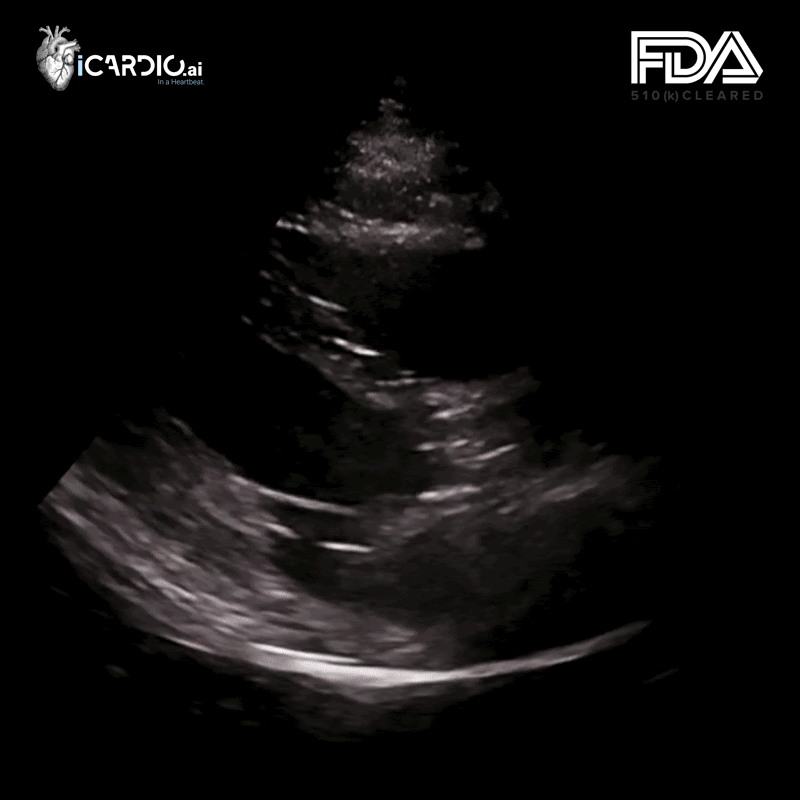
Back to menu
01
Solution name
Short description of the solution, try to keep this to about two sentences.
02
Solution name
Short description of the solution, try to keep this to about two sentences.
03
Solution name
Short description of the solution, try to keep this to about two sentences.
04
Solution name
Short description of the solution, try to keep this to about two sentences.
05
Solution name
Short description of the solution, try to keep this to about two sentences.
See all our solutions

iCardio.ai Receives Second FDA 510(k) Clearance, CardioVision™ for Aortic Stenosis

Today, iCardio.ai announces FDA 510(k) Clearance for CardioVision™.
This is our company’s second FDA clearance.
CardioVision™ can automatically detect aortic stenosis, a disease affecting 1.5M Americans with a one-way prognosis, whose only intervention is a valve replacement. Today, the only way aortic stenosis is diagnosed is by manual review of an echocardiogram by a human. We are challenging a new future of echocardiography with #AI.
- CardioVision™ was designated as a Breakthrough Device by the FDA for its capability to automatically detect aortic stenosis in healthcare settings where identifying aortic stenosis might be missed.
- Our algorithm has shown extremely compelling performance in outpatient imaging environments, where image quality can be various and poor, demonstrating extremely high sensitivity and specificity, making it well-suited for automated interpretation of echocardiography.
- We envision a future where all echocardiograms taken in the United States could instantly pass through CardioVision™ the moment the echo is taken for assessment of aortic stenosis, which can in turn increase disease detection and expedite treatment.
Echocardiography is the most ubiquitous imaging modality in cardiology, and our team won’t stop until we automate every component of it with AI capable of outperforming human interpretation.
So where do we go from here?
iCardio.ai CardioVision™ is an FDA-cleared AI software indicated as a diagnostic aid to support the detection of Aortic Stenosis. Taking in only a parasternal long axis (PLAX) clip, iCardio.ai CardioVision™ is used during a diagnostic workup to determine the likelihood of clinically significant aortic stenosis. The algorithm uses deep learning to predict aortic stenosis without explicitly measuring any variable, relying on deep learning. (Wessler, Benjamin S., et al. "Automated detection of aortic stenosis using machine learning." Journal of the American Society of Echocardiography 36.4 (2023): 411-420.)
Aortic stenosis (AS) is a progressive disease associated with important morbidity and mortality.[1] Prior observational studies have demonstrated a significant decrease in survival with AS, especially when the aortic valve obstruction is deemed severe.[2] Recently, observational data have suggested that untreated moderate AS is also associated with poor prognosis.[3,4,5] Unfortunately, the only therapy available for treatment of aortic stenosis is a valve replacement.[6]
[1] Généreux, Philippe, et al. “The mortality burden of untreated aortic stenosis.” Journal of the American College of Cardiology 82.22 (2023): 2101-2109.
[2] Otto C.M., Burwash I.G., Legget M.E., et al. “Prospective study of asymptomatic valvular aortic stenosis. Clinical, echocardiographic, and exercise predictors of outcome”. Circulation . 1997;95:2262-2270.
[3] Strange G., Stewart S., Celermajer D., et al. “Poor long-term survival in patients with moderate aortic stenosis”. JAm Coll Cardiol . 2019;74:1851-1863.
[4] Coisne A., Scotti A., Latib A., et al. “Impact of moderate aortic stenosis on long-term clinical outcomes: a systematic review and meta-analysis”. J Am Coll Cardiol Intv . 2022;15:1664-1674.
[5] Khan K.R., Khan O.A., Chen C., et al. “Impact of moderate aortic stenosis in patients with heart failure with reduced ejection fraction”. J Am Coll Cardiol . 2023;81:1235-1244.
[6]. Lindman, Brian R., et al. "Evaluating medical therapy for calcific aortic stenosis: JACC state-of-the-art review." Journal of the American College of Cardiology 78.23 (2021): 2354-2376.
Potential to Maximize Hospital Revenue
With the national average reimbursement (MS-DRG 267/277) for aortic valve replacement exceeding $45,000, and the total procedure estimated to produce an average of $70,000 in hospital revenue, the unmet financial opportunity to address the eligible untreated aortic stenotic patient population is significant. An analysis of the literature suggests more than 50% of patients eligible for intervention are not treated, or about 105,000 persons, and the consequential hospital revenue generation potential exceeds $4 billion.[7] We have been working with our distributors to expedite adoption of our technology, which has the potential to save lives for patients suffering from aortic stenosis.
[7] Li, Shawn X., et al. “Trends in utilization of aortic valve replacement for severe aortic stenosis.” JACC 79.9 (2022)
The AI Thesis
Artificial intelligence has already transformed industries, though we see these advancements siloed to specific domains. Example, Tesla’s autonomous driving, which was trained on billions of miles of driving data, or OpenAI’s ChatGPT for interacting with and generating general knowledge, trained on the corpus of the internet. The domain of medical imaging remains largely untapped. Accessing large imaging datasets for training AI systems remains challenging, owing to the bureaucratic hurdles required to access and organize institutional data. iCardio.ai continues to operate within the wave of first-mover advantage. With access to data, talent, distribution, and now our second FDA regulatory clearance, the moat we carved is deeper than ever. As a company, we are meeting our potential of changing medicine and fulfilling our mission of building the next evolution of echocardiography.
We are just getting started.
Joseph Sokol
CEO & Co-Founder
About iCardio.ai
See Our Demo

